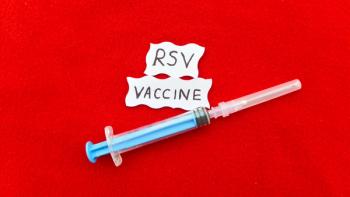
Pharmacy Students and Student Preceptors Boost Immunization Rates
Pharmacists working in eastern North Carolina counties have developed a program to improve immunization among low income, uninsured patients.
Pharmacists working in eastern North Carolina counties have developed a program to improve immunization rates among low income, uninsured patients.
Their program, which targets adults who are uninsured or indigent, built on previous work demonstrating that pharmacies who actively identify patients who are behind with immunizations and intervene proactively can increase immunization rates significantly.
The pharmacists were concerned that a majority of adults who received care at Cape Fear Clinic, a free clinic in Wilmington, NC, were behind in their vaccinations and were vaccinated at rates far lower than Healthy People 2020 goals. They developed a pharmacist-driven immunization program accessible to underserved patients.
The program, described in the Journal of the American Pharmacists Association, identified appropriate patients for intervention. Program organizers examined the many different avenues that pharmacists can employ to engage adults who need vaccinations.
The program's cornerstone was proactive chart review and simultaneous review of the North Carolina Immunization Registry. Pharmacy students in introductory and advanced pharmacy practice rotations helped review all patient charts to determine those patients who needed vaccines and created a plan so that the patient could receive multiple vaccines.
A key factor was creating a plan that allowed patients to receive those vaccinations in one visit to the pharmacy whenever possible. Once patients were identified, the pharmacy team made outreach efforts in educating patients about the need for the vaccines.
Patients only rarely had immunization records in their possession. This was a significant challenge.
Pharmacy management obtained some vaccines from manufacturer patient assistance programs at no cost. Pharmacy students also helped complete paperwork to obtain these vaccines.
The pharmacists reported that more than 500 active clinic patients received vaccines at no cost through this program. Without this program, they would probably not have received the vaccines.
Pharmacy staff also printed each patient's immunization record and gave it to him or her after vaccines were administered. This was an important factor in educating patients about the importance of immunizations and knowing their vaccination status.
These pharmacists indicated that pharmacy staff updated the patient's chart in the electronic medical record. They also noted that the pharmacy staff had to work closely with other health care providers and clinic staff. Their success represents concerted efforts by all members of the multidisciplinary team.
A specific advantage of this approach was that student pharmacists were exposed to clinical, administration, and business aspects of an immunization program.
Reference
Stilwell AM, Pavero C, Buxton J, Herrington G. Implementation of a pharmacist-driven immunization program designed to improve overall vaccination rates in indigent and uninsured patients. J Am Pharm Assoc (2003). 2017 Jun 10. pii: S1544-3191(17)30676-3. doi: 10.1016/j.japh.2017.04.465. [Epub ahead of print]
Newsletter
Stay informed on drug updates, treatment guidelines, and pharmacy practice trends—subscribe to Pharmacy Times for weekly clinical insights.




















































































































































































































